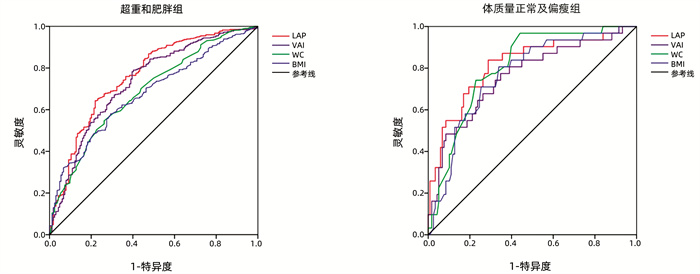| [1] |
CHALASANI N, YOUNOSSI Z, LAVINE JE, et al. The diagnosis and management of nonalcoholic fatty liver disease: Practice guidance from the American Association for the Study of Liver Diseases[J]. Hepatology, 2018, 67(1): 328-357. DOI: 10.1002/hep.29367. |
| [2] |
SAKLAYEN MG. The global epidemic of the metabolic syndrome[J]. Curr Hypertens Rep, 2018, 20(2): 12. DOI: 10.1007/s11906-018-0812-z. |
| [3] |
RINELLA ME. Nonalcoholic fatty liver disease: A systematic review[J]. JAMA, 2015, 313(22): 2263-2273. DOI: 10.1001/jama.2015.5370. |
| [4] |
LIU C, ZANG LJ. Research progress of new type body fat indexes of lipid accumulation product index and visceral adiposity index[J]. Chin J Diabetes, 2016, 24(11): 1032-1035. DOI: 10.3969/j.issn.1006-6187.2016.11.16. |
| [5] |
National Workshop on Fatty Liver and Alcoholic Liver Disease, Chinese Society of Hepatology, Chinese Medical Association, Fatty Liver Expert Committee, Chinese Medical Doctor Association. Guidelines of prevention and treatment for nonalcoholic fatty liver disease: A 2018 update[J]. J Clin Hepatol, 2018, 34(5): 947-957. DOI: 10.3969/j.issn.1001-5256.2018.05.007. |
| [6] |
ZHANG Y, LI B, LIU N, et al. Evaluation of different anthropometric indicators for screening for nonalcoholic fatty liver disease in elderly individuals[J]. Int J Endocrinol, 2021, 2021: 6678755. DOI: 10.1155/2021/6678755. |
| [7] |
VURAL KESKINLER M, MUTLU HH, SIRIN A, et al. Visceral adiposity index as a practical tool in patients with biopsy-proven nonalcoholic fatty liver disease/nonalcoholic steatohepatitis[J]. Metab Syndr Relat Disord, 2021, 19(1): 26-31. DOI: 10.1089/met.2020.0054. |
| [8] |
DAI H, WANG W, CHEN R, et al. Lipid accumulation product is a powerful tool to predict non-alcoholic fatty liver disease in Chinese adults[J]. Nutr Metab (Lond), 2017, 14: 49. DOI: 10.1186/s12986-017-0206-2. |
| [9] |
ÖZCAB 1 B, DEMIRHAN S, AKYOL M, et al. Lipid accumulation product is a predictor of nonalcoholic fatty liver disease in childhood obesity[J]. Korean J Pediatr, 2019, 62(12): 450-455. DOI: 10.3345/kjp.2019.00248. |
| [10] |
OKAMURA T, HASHIMOTO Y, HAMAGUCHI M, et al. The visceral adiposity index is a predictor of incident nonalcoholic fatty liver disease: A population-based longitudinal study[J]. Clin Res Hepatol Gastroenterol, 2020, 44(3): 375-383. DOI: 10.1016/j.clinre.2019.04.002. |
| [11] |
XU C, MA Z, WANG Y, et al. Visceral adiposity index as a predictor of NAFLD: A prospective study with 4-year follow-up[J]. Liver Int, 2018, 38(12): 2294-2300. DOI: 10.1111/liv.13941. |
| [12] |
VONGSUVANH R, GEORGE J, MCLEOD D, et al. Visceral adiposity index is not a predictor of liver histology in patients with non-alcoholic fatty liver disease[J]. J Hepatol, 2012, 57(2): 392-398. DOI: 10.1016/j.jhep.2012.03.013. |
| [13] |
CASTERA L, FRIEDRICH-RUST M, LOOMBA R. Noninvasive assessment of liver disease in patients with nonalcoholic fatty liver disease[J]. Gastroenterology, 2019, 156(5): 1264-1281. e4. DOI: 10.1053/j.gastro.2018.12.036. |
| [14] |
ZHOU YJ, ZHOU YF, ZHENG JN, et al. NAFL screening score: A basic score identifying ultrasound-diagnosed non-alcoholic fatty liver[J]. Clin Chim Acta, 2017, 475: 44-50. DOI: 10.1016/j.cca.2017.09.020. |
| [15] |
YIP TC, MA AJ, WONG VW, et al. Laboratory parameter-based machine learning model for excluding non-alcoholic fatty liver disease (NAFLD) in the general population[J]. Aliment Pharmacol Ther, 2017, 46(4): 447-456. DOI: 10.1111/apt.14172. |
| [16] |
GHOSH A, GAO L, THAKUR A, et al. Role of free fatty acids in endothelial dysfunction[J]. J Biomed Sci, 2017, 24(1): 50. DOI: 10.1186/s12929-017-0357-5. |
| [17] |
LONGO M, ZATTERALE F, NADERI J, et al. Adipose tissue dysfunction as determinant of obesity-associated metabolic complications[J]. Int J Mol Sci, 2019, 20(9): 2358. DOI: 10.3390/ijms20092358. |
| [18] |
XUE R, FAN JG. Brief introduction of an international expert consensus statement: A new definition of metabolic associated fatty liver disease[J]. J Clin Hepatol, 2020, 36(6): 1224-1227. DOI: 10.3969/j.issn.1001-5256.2020.06.007. |








 DownLoad:
DownLoad:
